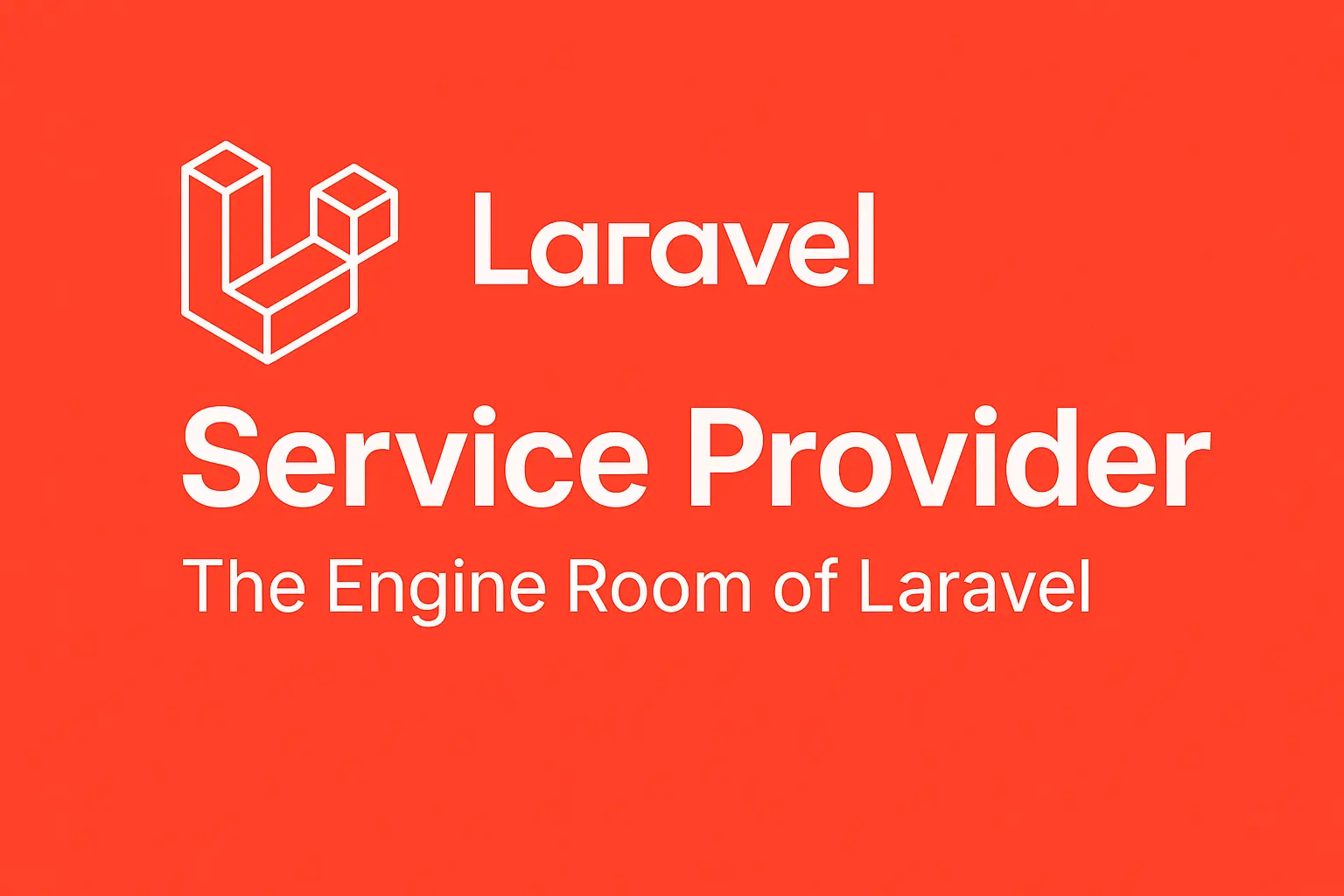Learn how Laravel Service Providers work, from the register() and boot() methods to deferred providers for performance optimization. This guide covers their purpose, lifecycle, and includes real code examples to help you understand how Laravel handles dependency injection and application bootstrapping.

Service Providers are the foundation of Laravel’s bootstrapping process. They serve as the glue between Laravel's internal services and your application logic.
Service Providers are the entry points for packages and app modules into Laravel’s Dependency Injection (DI) system.
public function register()
{
$this->app->bind(
\App\Contracts\MyService::class,
\App\Services\MyServiceImplementation::class
);
}
public function boot()
{
Route::middleware('web')
->group(base_path('routes/my-custom-routes.php'));
}
If your provider is only registering bindings in the service container, you may choose to defer its registration until one of the registered bindings is actually needed.
Deferring the loading of such a provider improves the performance of your application, since it avoids loading that provider from the filesystem on every request.
Laravel compiles and stores a list of all the services supplied by deferred service providers, along with the name of the service provider class. Then, only when one of those services is resolved, Laravel loads the relevant provider.
To defer loading, implement the \Illuminate\Contracts\Support\DeferrableProvider interface and define a provides() method that returns the list of services the provider offers:
namespace App\Providers;
use App\Services\Riak\Connection;
use Illuminate\Contracts\Foundation\Application;
use Illuminate\Contracts\Support\DeferrableProvider;
use Illuminate\Support\ServiceProvider;
class RiakServiceProvider extends ServiceProvider implements DeferrableProvider
{
/**
* Register any application services.
*/
public function register(): void
{
$this->app->singleton(Connection::class, function (Application $app) {
return new Connection($app['config']['riak']);
});
}
/**
* Get the services provided by the provider.
*
* @return array<int, string>
*/
public function provides(): array
{
return [Connection::class];
}
}
registerConfiguredProviders() is called by Laravel’s core app.config/app.phpbootstrap/providers.phpregister()boot()
register()This method sets up all services and tells Laravel how to build them later when required via dependency injection.
Why use register()?
// Singleton binding example
public function register()
{
$this->app->singleton('customLogger', function ($app) {
return new \App\Logging\CustomLogger;
});
}
boot()Used for logic that depends on registered services. This is where Laravel starts using the tools you registered.
// Blade directive example
public function boot()
{
Blade::directive('greet', function ($expression) {
return "<h1>Hello, {$expression}!</h1>";
});
}
php artisan make:provider MyCustomServiceProvider
Then register it inside config/app.php or bootstrap/providers.php depending on Laravel version.
After creating a custom service provider, you need to register it so Laravel knows about it. This is done either in the config/app.php file (for Laravel ≤10) or in bootstrap/providers.php (for Laravel 11+).
// Laravel ≤10
'providers' => [
// ...
App\Providers\MyCustomServiceProvider::class,
],
// Laravel 11+
return [
App\Providers\MyCustomServiceProvider::class,
];
Once registered, Laravel will automatically call the register() and boot() methods during the app lifecycle.
Sometimes, you may want to register a provider only in certain environments (e.g., only in local or production).
You can do this inside the AppServiceProvider::register() method or even in App\Providers\AppServiceProvider itself:
use Illuminate\Support\Facades\App;
use Illuminate\Support\ServiceProvider;
public function register()
{
if (App::environment('local')) {
$this->app->register(\App\Providers\LocalOnlyServiceProvider::class);
}
}
You can also use multiple environments:
if (App::environment(['local', 'staging'])) {
$this->app->register(\App\Providers\DevToolsServiceProvider::class);
}
This helps keep production lean by loading debug tools only when needed.
Service Providers are essential for building clean, extensible Laravel applications. Mastering them gives you full control over your app’s lifecycle and structure.
Your email address will not be published. Required fields are marked *